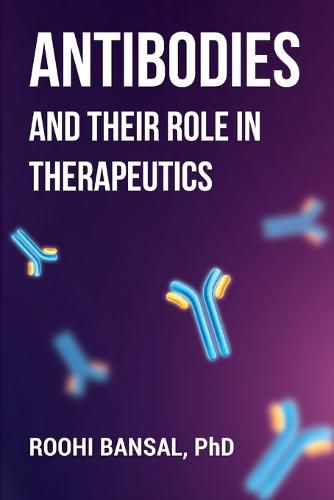Readings Newsletter
Become a Readings Member to make your shopping experience even easier.
Sign in or sign up for free!
You’re not far away from qualifying for FREE standard shipping within Australia
You’ve qualified for FREE standard shipping within Australia
The cart is loading…






This title is printed to order. This book may have been self-published. If so, we cannot guarantee the quality of the content. In the main most books will have gone through the editing process however some may not. We therefore suggest that you be aware of this before ordering this book. If in doubt check either the author or publisher’s details as we are unable to accept any returns unless they are faulty. Please contact us if you have any questions.
Beginning with the structure, types, functions, and gene organization of antibodies, the book aims to shine a detailed light on the monoclonal antibodies (often referred to as mAbs) that have revolutionized the fields of therapeutics and diagnostics.
The book describes the different ways of generating chimeric, humanized, and fully human monoclonal antibodies, emphasizing phage display, hybridoma, and rDNA technology. In addition, the book focuses on the various recombinant antibody formats in detail:
Drug conjugates: Antibody-drug conjugates (ADCs), Immunotoxins (Recombinant, Humanized and Fully Human) and Antibody-antibiotic conjugate (AAC) Bispecific antibodies: scFv based (BiTE, DARTs and TandAbs) and Full-length IgG based Abzymes and Antibody-directed enzyme prodrug therapy (ADEPT) Fc-fusion proteins Single-domain antibodies (VHH and IgNAR sdAb)
The book discusses the various therapeutic applications of monoclonal antibodies, along with the immunogenicity issues. The book also covers the modes of administration and side effects of monoclonal antibodies, along with the challenges and issues faced while developing a monoclonal antibody into a therapeutic agent. Modifications introduced by the researchers to decrease the immunogenicity issues and increase the efficacy of therapeutic mAbs are also described.
The book is an invaluable resource for researchers and students in biology and medicine, biotechnology, immunology, genetics, molecular biology, and anyone interested in antibody engineering.
$9.00 standard shipping within Australia
FREE standard shipping within Australia for orders over $100.00
Express & International shipping calculated at checkout
This title is printed to order. This book may have been self-published. If so, we cannot guarantee the quality of the content. In the main most books will have gone through the editing process however some may not. We therefore suggest that you be aware of this before ordering this book. If in doubt check either the author or publisher’s details as we are unable to accept any returns unless they are faulty. Please contact us if you have any questions.
Beginning with the structure, types, functions, and gene organization of antibodies, the book aims to shine a detailed light on the monoclonal antibodies (often referred to as mAbs) that have revolutionized the fields of therapeutics and diagnostics.
The book describes the different ways of generating chimeric, humanized, and fully human monoclonal antibodies, emphasizing phage display, hybridoma, and rDNA technology. In addition, the book focuses on the various recombinant antibody formats in detail:
Drug conjugates: Antibody-drug conjugates (ADCs), Immunotoxins (Recombinant, Humanized and Fully Human) and Antibody-antibiotic conjugate (AAC) Bispecific antibodies: scFv based (BiTE, DARTs and TandAbs) and Full-length IgG based Abzymes and Antibody-directed enzyme prodrug therapy (ADEPT) Fc-fusion proteins Single-domain antibodies (VHH and IgNAR sdAb)
The book discusses the various therapeutic applications of monoclonal antibodies, along with the immunogenicity issues. The book also covers the modes of administration and side effects of monoclonal antibodies, along with the challenges and issues faced while developing a monoclonal antibody into a therapeutic agent. Modifications introduced by the researchers to decrease the immunogenicity issues and increase the efficacy of therapeutic mAbs are also described.
The book is an invaluable resource for researchers and students in biology and medicine, biotechnology, immunology, genetics, molecular biology, and anyone interested in antibody engineering.